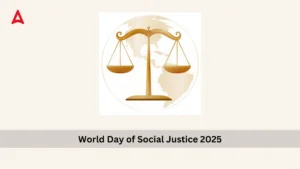Quantitative Aptitude Quiz For IBPS Clerk Main
Directions (1-2): In the following questions three statements either I, II and III or A, B and C are given. You have to find which statement/statements is/are sufficient to solve the given problem.
Q1. What is the cost price of the wrist watch?
A. The cost price of a color T.V. ismore than the cost price of the watch.
B. The cost price of a ceiling fan is 400 rupees less than the cost price of the watch.
C. The ratio of cost prices of T.V. and ceiling fan is 10: 3.
Q2. What is the speed of the motorbike?
A. A car travels the same distance in 3 hours as the bike travels in 6 hours.
B. Speed of the car ismore than the speed of a train having a length of 150 m which crosses a pole in 6 seconds.
C. The car crosses a standing goods train of length 800 m in 24 seconds. (The length of the car is negligible)
Q3. The expenses on rice, fish and oil of a family are in the ratio 12 : 17 : 3 respectively. The price of these articles is increased by 20%, 30% and 50% respectively. The total expenses of family on these articles are increased by:
Q4. The simple interest on a certain sum of money for 3 years at 8% per annum is half the compound interest on Rs. 8000 for 2 years at 10% per annum. Find the sum on which simple interest is calculated.
Q5. According to a plan, a drilling team had to drill to a depth of 270 metres below the ground level. For the first three days the team drilled as per the plan. However, subsequently finding that their resources were getting underutilized according to the plan, it started to drill 8 metres more than the plan every day. Therefore, a day before the planned date they had drilled to the depth of 280 metres. How many metres of drilling was the plan for each day?
Directions (6-10): Percentage of students interested in studying different subjects (Hindi, English, Computer, Math, Science, Sanskrit) in Pie chart & percentage of girls interested in studying these subjects in bar graph.
Q6. For which of the subjects, the ratio of percentage of student interested in that subject to the percentage of girls interested in that subject is minimum?
Q7. What is the difference between the no. of girls interested in studying computer and that of science?
Q8. What is the ratio of the no. of boys interested in Computer and English together to that of girls interested in studying Sanskrit and Math together?
Q9. What is the ratio of the no. of students interested in studying maths and Sanskrit together to that interested in Hindi and Science together?
Q10. No. of girls studying Hindi and English together is approximately what percent of the no. of boys studying the same subject?
Directions (11-15): In the given question, two equations numbered I and II are given. You have to solve both the equations and Give answer:
Q11. I. 2x² - 7x+ 3 = 0
II. 2y² - 7y + 6 = 0
Q12. I. 4x² + 16x +15 = 0
II. 2y² + 3y + 1 = 0
Q13. I. 9x² - 45x + 56 = 0
II. 4y² - 17y + 18 = 0
Q14. I. 2x² + 11x + 14 = 0
II. 2y² + 15y + 28 = 0
Q15. I. 6x² + 11x + 4 = 0
II. 4y² - 7y – 2 = 0






 The Hindu Review October 2022: Download ...
The Hindu Review October 2022: Download ...
 World Day of Social Justice 2025, Theme,...
World Day of Social Justice 2025, Theme,...
 Post Office GDS Recruitment 2025 Notific...
Post Office GDS Recruitment 2025 Notific...




